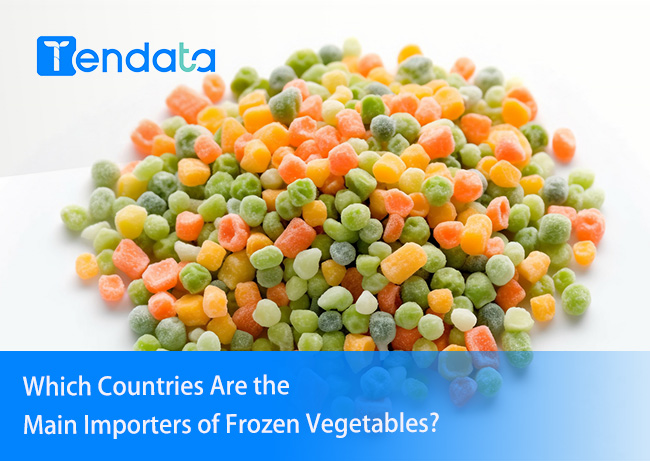 Import News
Import News
 21-03-2024
21-03-2024
Why is there such a high demand for frozen vegetables globally?
1. Nutritional Preservation: Frozen vegetables are immediately frozen after harvesting, effectively locking in their nutritional content, including vitamins, minerals, and antioxidants. In contrast, fresh vegetables may lose some of their nutritional value due to oxidation during long periods of storage and transportation.
2. Extended Shelf Life: Freezing vegetables extends their shelf life, slowing down the process of decay and spoilage. This allows consumers to enjoy fresh vegetables whenever they need them without worrying about rapid deterioration.
3. Ease of Storage and Transportation: Frozen vegetables are easier to store and transport compared to fresh vegetables. They do not require frequent replenishment of water or protection from bruising, as they can maintain their quality for an extended period while frozen.
4. Convenience: Frozen vegetables are typically already cleaned and chopped, ready to use directly. This eliminates the need for tedious preparation tasks such as washing and peeling, making them very convenient for busy households and individuals who need to prepare food quickly.
When you want to enter the frozen vegetable market, how do you quickly find customers? Use global import data to help you easily find customers!
Just select the "Importers" report on a global import data platform like Tendata, and you can see which countries' customers have a higher demand for frozen vegetables. According to Tendata's latest data, in the past year, the United States, Japan, the United Kingdom, and France imported the most frozen vegetables (specific categories of imported vegetables can be obtained by contacting Tendata).

Which Countries Are the Main Importers of Frozen Vegetables?
1. United States - $3.2 billion
According to global import data for frozen vegetables, the United States is the largest market for frozen vegetable imports globally, with an import value expected to reach $3.2 billion in 2023. Due to the convenience and extended shelf life of frozen vegetables, demand in the United States remains strong. Popular frozen vegetables imported by the United States include peas, sweet peas, corn, and broccoli.
2. Japan - $2.1 billion
Japan is the second-largest market for frozen vegetable imports, with an import value expected to reach $2.1 billion in 2023 according to global import data for frozen vegetables. The country has a strong culture of incorporating frozen vegetables into dishes, making them a popular choice among consumers. Japan imports a variety of frozen vegetables, including spinach, carrots, and edamame.
3. United Kingdom - $1.9 billion
The United Kingdom is another major importer of frozen vegetables, with an import value expected to reach $1.9 billion in 2023 according to global import data for frozen vegetables. In recent years, driven by the shift towards healthier eating habits, demand for frozen vegetables in the UK has been steadily increasing. Popular frozen vegetables imported by the UK include cauliflower, Brussels sprouts, and kale.
4. France - $1.7 billion
France is an important market for frozen vegetables, with an import value expected to reach $1.7 billion in 2023. The country's rich culinary traditions include the use of frozen vegetables in various dishes. France imports a variety of frozen vegetables, including tomatoes, peppers, and zucchini.
5. Germany - $1.4 billion
Germany is also a major market for frozen vegetables, with an import value expected to reach $1.4 billion in 2023 according to global import data for frozen vegetables. Growing interest in healthy eating and convenience among consumers has driven demand for frozen vegetables in the country. Popular frozen vegetables imported by Germany include asparagus, peas, and sweet corn.
6. Italy - $933.5 million
Italy is an important market for frozen vegetables, with an import value expected to reach $933.5 million in 2023. The country's deep culinary traditions include the use of frozen vegetables in many traditional dishes. Italy imports a variety of frozen vegetables, including artichokes, fennel, and chicory.
7. Belgium - $809.2 million
Belgium is a major market for frozen vegetables, with an import value expected to reach $809.2 million in 2023. The country's growing interest in convenient dietary solutions has driven demand for frozen vegetables. Popular frozen vegetables imported by Belgium include chives, pumpkin, and fiddleheads.
8. Netherlands - $753.3 million
The Netherlands is an important market for frozen vegetables, with an import value of $753.3 million expected in 2023. The country's strong agricultural industry makes it a major player in the global frozen vegetable market. The Netherlands imports a variety of frozen vegetables, including carrots, onions, and potatoes.
9. Spain - $749.6 million
Spain is a major market for frozen vegetables, with an import value expected to reach $749.6 million in 2023. The country's growing interest in healthy eating and convenience has driven demand for frozen vegetables. Popular frozen vegetables imported by Spain include garlic, eggplant, and peppers.
10. South Korea - $496.9 million
South Korea is an important market for frozen vegetables, with an import value expected to reach $496.9 million in 2023. In recent years, driven by the shift towards healthier eating habits, demand for frozen vegetables in South Korea has been steadily increasing. Popular frozen vegetables imported by South Korea include cabbage, radishes, and seaweed.
By selecting the "Importer" report on a global import data platform like Tendata, you can easily find customers from a large number of importers. According to Tendata's latest data, in the past year, these customers imported frozen vegetables: (For complete data, please contact Tendata).
Category
Leave Message for Demo Request or Questions


 T-info
T-info T-discovery
T-discovery

 My
Tendata
My
Tendata Market Analysis
Market Analysis Customer
Development
Customer
Development Competitor
Monitoring
Competitor
Monitoring Customer Relationship
Customer Relationship





































































































































